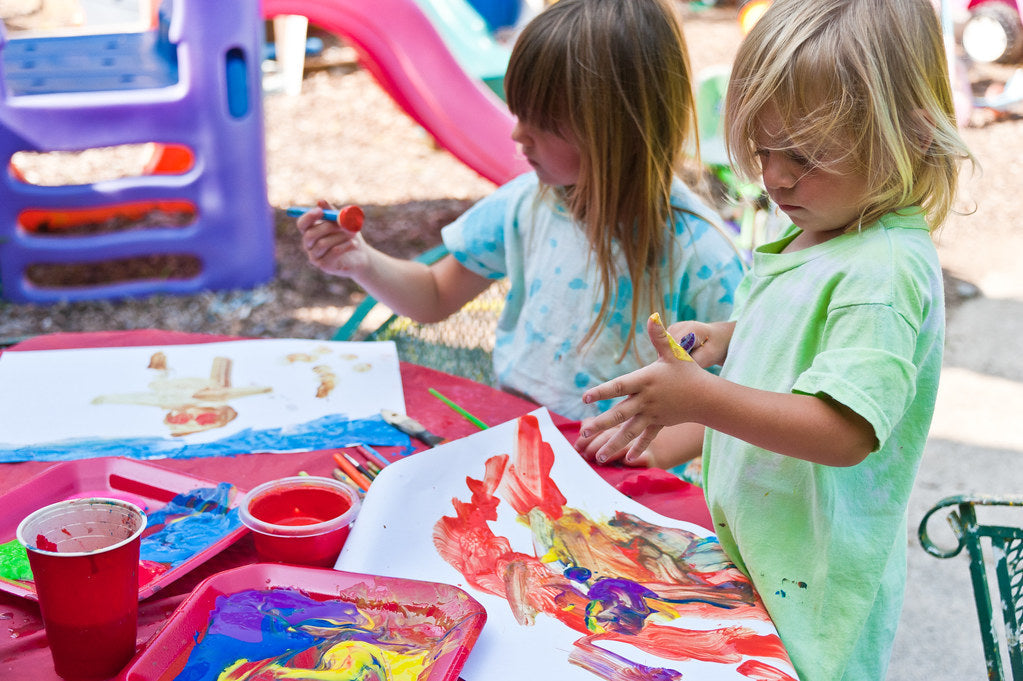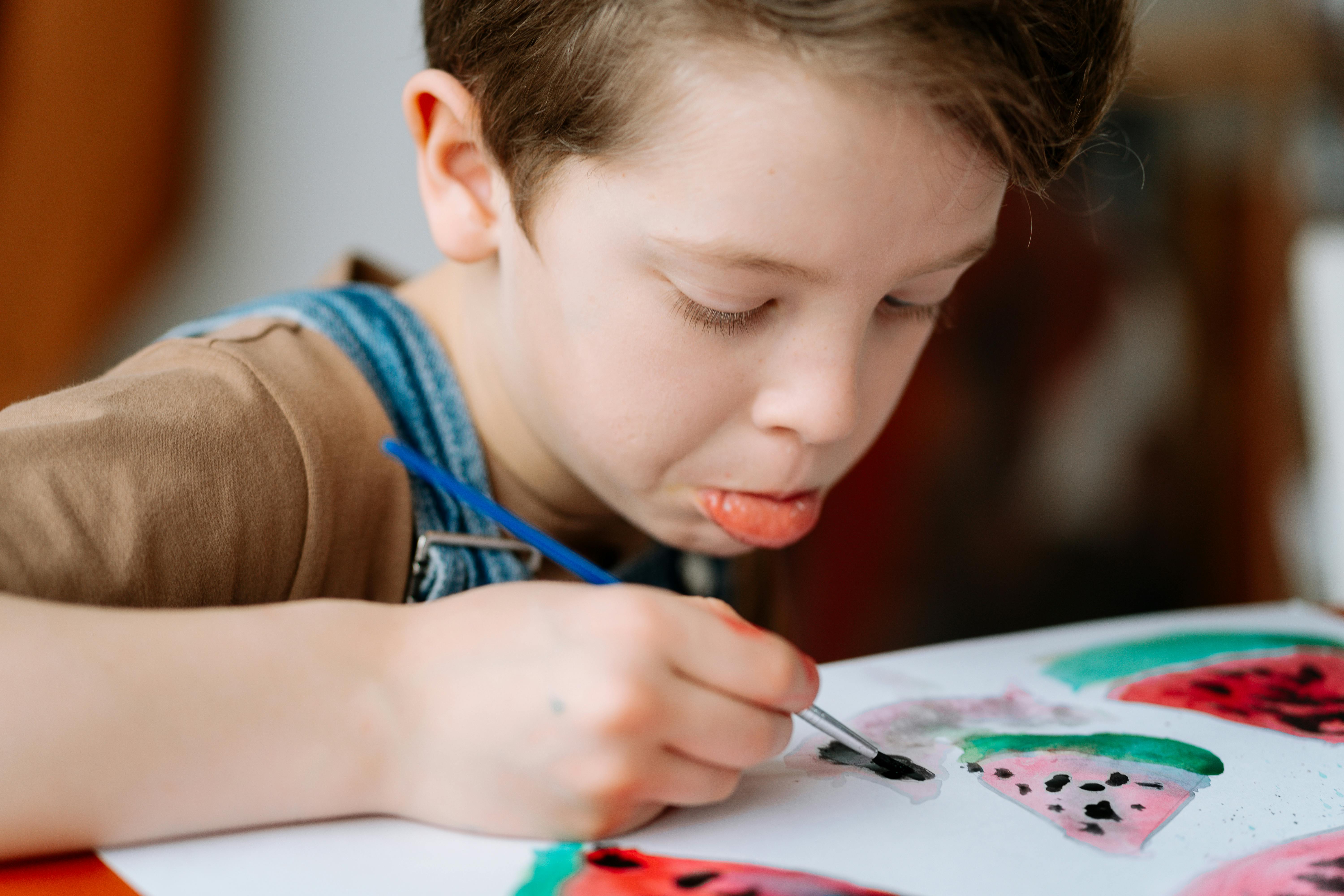
Using Art With Your Kids to Help them Express Gratitude
November 20, 2021
By Beth Herrild
Art & Gratitude
Art activities are the perfect way to teach kids about gratitude. Art sets the stage for kids developing the seeds of gratitude, self-confidence and empathy. It also allows them to feel invested in what they’re making in a deeply personal way, especially if the adults aren’t too directive with the instructions. Thanksgiving is a great time to engage in gratitude activities with kids. Paring art and gratitude is a win-win.
But helping them develop a deep sense of gratitude takes somewhat more. Sure, participating in a Giving Tree with your kids is good, but I’ve found that when I am paying for the gifts, it hits kids on an intellectual level, rather than creating a deep, visceral experience that will stay with them.
Here are three activities that are easy to do that go beyond surface platitudes. They are great for parents, grandparents, or any relative or family friend (with parental blessings). The important thing is that all of the adults participate fully.
Thankfulness Tree:

If you have an indoor potted tree in your house, that can work, but it is also super easy to fill a largish pot with dirt and insert a tree branch from outside. Then you can create the leaves in a variety of ways:
• Purchase decorative leaves from a craft or home store. They may be paper leaves or artificial silk fall leaves for decoration. You can use metallic pens to draw and write on them.
• Make your own leaves, if you have more time. These can be as simple as solid color paper cut outs or you could use patterned scrap book paper. You can cut them by hand or purchase a leaf shaped paper punch. If you intend to make this activity a family tradition, it could totally be worth the investment.
• You could also go outside and collect some leaves that aren’t too dry and brittle. Then use those leaves to trace around onto a piece of paper or light cardboard. Then cut them out. If you don’t have time to do this ahead of time, have everyone make their own leaves at the table when they’re writing them!
When you have your leaves, make sure you have created a way for them to hang them, either punching a hole in the top of the leaves for string or tying a string around the stem. You should have enough leaves for each person in your family who will be at Thanksgiving dinner to write at least six. You could also start this activity a few days before Thanksgiving by setting the leaves and writing supplies out on a table near where you have placed the branch in the pot or indoor tree.
In order for kids to get the most benefit out of this activity, it is important to encourage them to be as specific as possible about their gratitude. It is too easy to do the activity with very little thought if you allow them to write one general word like: Family, Health, Home. The activity has more impact if they have to really think about the specifics of what they are grateful for and why. So family might actually be, “I am so grateful that I have a Mom who spends time doing schoolwork with me even when she has lots of other things she has to do.” Or, “I am grateful that I have a home where I have enough space to do lots of different activities. It keeps me warm and safe.” Health might be: “I am grateful that I have lots of energy to do all of the things I love to do, like karate.” Write small or use big leaves!
Create & Write Thankful Cards:

There should be enough for each person to write at least one, maybe two. Again, this can be as easy or complicated as you’d like. If you have pretty young children, maybe you do leaf rubbings and then have them dictate the words they’d like you to write on them. You can use almost any white paper for this, such as printer paper or sketch paper. Go outside with the kids and collect fallen leaves.
For the leaf rubbings, collecting the leaves should be done right before you do the leaf rubbings unless you are going to press the leaves in a book; otherwise, the leaves will quickly dry up and shrivel. If the leaves are wet, dry them off.Show the kids how to lay a leaf, or 2 or 3 arranged, on the table and then place their paper on top.Using a crayon, color using the side of the crayon, on top of the leaves. For younger kids, you may have to hold the paper in place while they color. If the paper moves, it won’t work.
Then after the leaf image emerges on the paper, use watercolor to paint over the top of the leaf. You can let kids choose what color crayon to use and what colors of watercolor paint. White crayons are fun because they are kind of invisible until you put the watercolor wash over the top. However, since they are tough to see on white paper, white crayons also make it hard for kids to see whether they’ve colored all over the top of the leaves or not when they’re dry.
This one sheet of paper can be your card. It doesn’t need to be folded like a card. If your kids are older, they might have fun tracing a leaf onto the front of a blank card or folded over piece of paper and then doing Zen drawing inside the leaf outline. You can do this with just a black marker or you can use colors. Zen drawing is pretty easy. You break up the leaf shape into several sections and then draw repeating patterns in each of the sections. The patterns can be very simple, as long as you do all the same pattern within each of the sections.
When your Thankfulness Cards are done, ask each child (and adult, because it is important for adults to model this as well) to choose one person in their lives for whom who they are grateful. One year, my son chose our minister and my husband chose the man who has repaired our cars for many years. Kids might choose a librarian, a postal worker who is always kind, a doctor or nurse. Encourage them to think deeply about all of the people in their lives who care about them and help them. Then, ask them to write a short note to the person, being specific again about why they are grateful. My son wrote to our minister about how much he enjoyed his stories every Sunday and how they made him smile well into each week. Tell kids that the more specific they can be, the more meaningful it will be for the person receiving the note. My father always told me that if people had helped me in my life, I needed to make a point of telling them how much they helped me and thanking them. I have found that doing this has meant more than I could ever have imagined!
Random Acts of Kindness and Gratitude Token:

This is the third way to help kids show gratitude to immediate family members, and is a super creative activity! The token could look like almost anything. We used a card stock heart that we collaged & painted on. The idea is to create the token collaboratively with your kids so that they are invested in it and will be more likely to participate fully.
Once you create the token, one person (probably you) would do the first Random Act of Kindness and Gratitude to kick off the new tradition. You might launch it on Thanksgiving and keep it up all through the holiday season; or launch it before Thanksgiving so you can talk about how it makes people feel at Thanksgiving dinner.
You do something kind and unexpected for someone, like you might make a child’s bed for him, if that is a chore he is normally expected to do. Or you might clean up a mess he made that he is expected to clean up. After you do something kind and unexpected for another family member, you leave the token on his/her dresser or nightstand (whatever spot you all agree upon). That is your way of saying “I did something kind and unexpected for you because I am grateful for you. Now it’s your turn to do something for someone else!” You don’t tell the person that it was you or what you did; they just have to try to figure out who did it and what it was. So, it is kind of like doing things for secret pals. If you usually unload the dishwasher, your child might do that chore without being asked. Kids love the secret part!
Depending on the ages of your children or grandchildren, you may choose to do one of these activities this year and modify what you do in the coming years as they grow. We hope whatever you choose to do, that you will continue to integrate art with gratitude activities for many years to come. You will help the kids develop empathy, humility, and genuine care for others to combat all of the selfish, entitled messages of our society. This is turn will help them live more grounded, loving and fulfilling lives. So, next time you are considering ways to help your kids learn about gratitude, remember that art activities are the perfect way to teach kids about gratitude.


